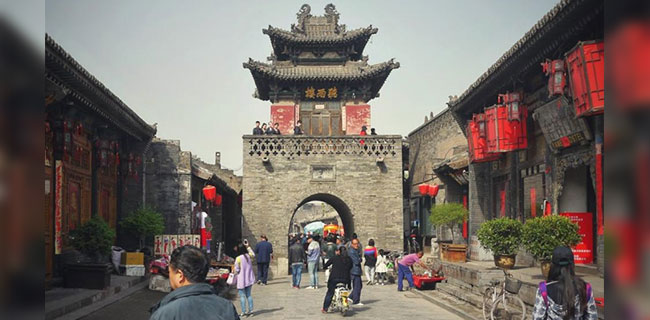
By Bhuvi Gupta
 India-China relations have been in the news for all the wrong reasons for the most part of 2020. With 47 apps banned last week, the tally of banned apps now stands at 220. The latest announcement however made me contemplate how Chinese apps may have started off as clones of popular western apps but have innovated to serve the needs and culture of their Chinese users and become beacons of innovation, which are being copied by the West.
India-China relations have been in the news for all the wrong reasons for the most part of 2020. With 47 apps banned last week, the tally of banned apps now stands at 220. The latest announcement however made me contemplate how Chinese apps may have started off as clones of popular western apps but have innovated to serve the needs and culture of their Chinese users and become beacons of innovation, which are being copied by the West.
Irrespective of how localised globalised platforms (in other countries) try to be, the benefits of creating products nuanced to the people who will use them cannot be denied. The lesson for India hence becomes to create products with features, which suit our behaviour — be it ‘jugaad’ or ‘bachhat’. More than copying the west, I feel Indians apps should ape China, because we share more with its collectivistic culture than the individualistic culture of the west. Also noteworthy and ape-worthy is that Chinese apps have evolved to serve people who have leapfrogged the PC era directly to mobile, exactly like the majority of the Indian population have already and will in the future.
I am sharing some of the most ape-worthy strategies below.
The Micro-transaction Model
Isn’t it commonplace to have 10 tabs open on our browsers or a Kindle full of fabulous e-books, which you have lost interest in or are too busy for?
One of my strongest beliefs in the digital world where access to information is no longer an entry barrier is that attention is what will be valuable, because attention is in limited supply even if information isn’t.
With that central thought and taking into account the limited affordability of many Chinese people, China’s companies sell products like books and music streams in bite-sized manner. For example, China’s largest online/ e-book publishing company, Yuewen Group, sells books in capsules of 1000 words. This micro-transaction model is beneficial to both writers and readers, because writers end up selling more to readers who are on the fence about paying full price for a book they may or may not finish. In price-sensitive India, where value-for money is a key determinant for success, this can open the audience with limited affordability and accessibility who can choose to consume only that they continue to find value in.
The Cult of the SuperApp – Apps as Phone OS (Operating System)

Alipay’s homescreen could be mistaken for the homescreen of your phone
Reams have been written about Tencent owned WeChat, which transitioned from a messaging app modeled on WhatsApp, to one that can order food; send money, book travel and much more. Wechat has 1 billion monthly active users and has spawned a multitude of copycats both within China and abroad. While super apps other than Wechat are common in China, Gojek in Indonesia, and PayTM in India are what have possibly come closest to replicating their breadth in other countries but are still far from penetrating the market to the extent that Chinese apps have.
SuperApps basically capitalise on their loyal user base and brand salience to share it across different survives. This in turn helps drive app traffic to retain mindshare and relevance. As a result of this bundling of apps, users never feel the need to go out of the app ecosystem and the app homescreen becomes the pseudo phone homescreen. For older generations who face a tough learning curve when it comes to technology, such apps are very useful. This is also one of the key reasons why superapps have been so successful in China. For the app, it is beneficial because it opens multiple revenue streams other than advertising. For example, today more than 80% of Wechat’s revenues come from transactions rather than advertising. It is a model that may just work very well with the recently launched WhatsApp Pay in India.
In India, the Covid-19 lockdown helped drive additional functionalities like grocery delivery features into Swiggy and Zomato, parcel delivery to Uber. However, posts lifting of lockdown these additional features have lost priority, which is unfortunate because this was just the beginning of a possible super app journey.
Path to Market
Understanding local customs is the USP for Indian founders. This is most often where MNCs who launch their products in India flail. Local doesn’t only mean language, etiquette, social norms; it extends beyond these to attitudes and quirks unique to Indian hardships and society.
In business terms, this can mean paying attention in app strategy to India’s love for discounts, value for money, a culture which doesn’t believe in credit, ‘jugaad’, cashbacks, the importance of family, arranged marriages, one device shared by a family or mostly by siblings, Bollywood and cricket etc. in addition to logo, design layout, and language etiquette. The latter matters, but ignores fundamental insights about customers that can drive adoption of new technology.

QR Codes for a Phygital world
PayTM has used QR codes to drive digital transactions but scope for them to be leveraged a lot more remains
QR codes have been one of those digital features, which despite having been around for a long time have not been leveraged as much as they can be (with the exception of PayTM who has helped their cause). For the 700 million Indians who will come online directly to a 5G world, QR codes can be great way to help simplify the digital world — all QR codes require are a working camera and a data connection.
In China, QR codes are used extensively – as authentication stamps on goods often faked, as identity tags at workplaces, pet tags, as credit cards, on billboards… Applications are in fact endless and should be used extensively as the remaining 700 million Indian users whose technological learning curve will be steeper come online.
~ ~
While I am winding up my love letter to Chinese innovation here in my column today, I have only scratched the surface of what China is doing. At the core China is using every feature of the mobile device available to innovate. For e.g. QR codes use the camera as a data entry feature instead of a data collection feature. The lessons for Indian businesses are many and just waiting to be applied for large-scale success.
Bhuvi Gupta is a marketer with over 10 years across industries, of which the last six have been in Media & Entertainment. She has been a part of many launch marketing campaigns – specifically at the Times of India group, Republic TV and the latest in marketing a Bollywood film. She writes on A&M (mostly marketing, but often on advertising too) every other Tuesday. Her views here are personal. She tweets at @bhuvigupta3